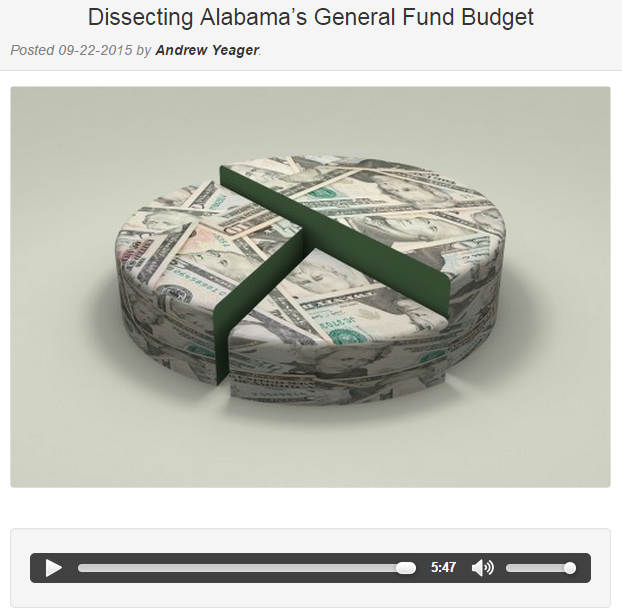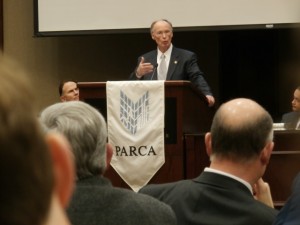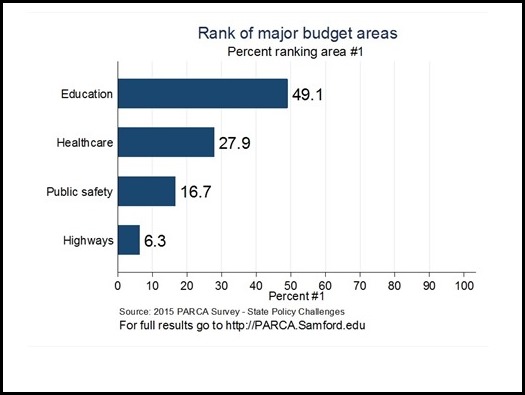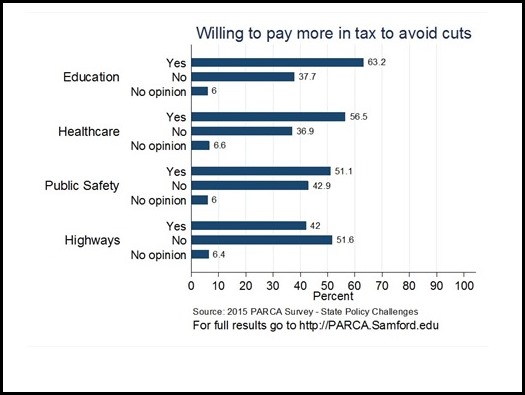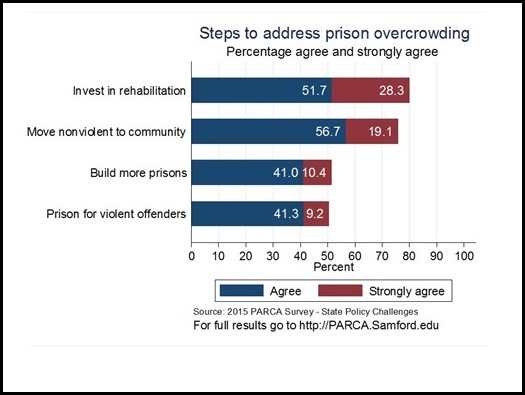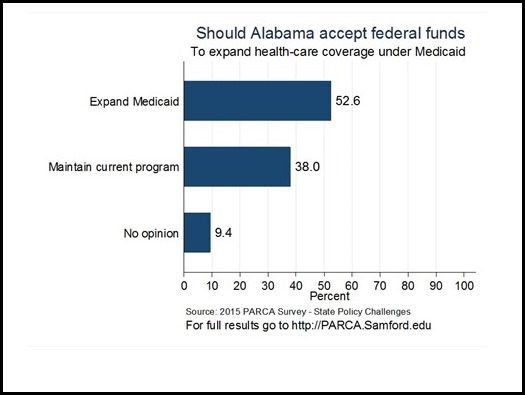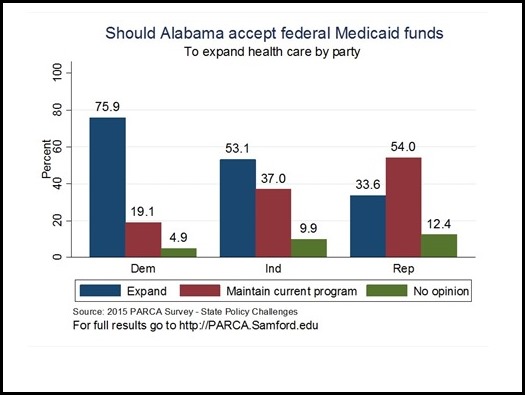Despite the healthy economy, the state’s General Fund posted its usual sputtering performance in 2015, according to the state’s year-end revenue collection reports.
The General Fund, which supports the non-education functions of state government, received about $1.8 billion in 2015, up from approximately $1.7 billion in 2014. However, that total includes a $105 million transfer from a business tax escrow account. Without that one-time transfer, General Fund revenue collections would have been up just 1.4 percent over 2014. And in both 2014 and 2015, the General Fund was supplemented with $146 million in borrowing from the Alabama Trust Fund.
Neither the $146 million nor the $105 million will be available for 2016. That’s the scenario that set the stage for the Legislature’s protracted struggle to pass a budget for 2016. Anticipating that $251 million hole, the Legislature balanced the 2016 General Fund budget by cutting state agencies, adding some new revenue by raising the cigarette tax, and shifting more of the use tax from the Education Trust Fund to the General Fund.
Those measures will allow the General Fund to sputter along another year, but they won’t solve the long-term problem: The General Fund’s hodgepodge of taxes don’t grow at the same rate as the economy. As the cost of those non-education services rises, the General Fund doesn’t keep pace.
The chart below lists the revenue sources that supply the General Fund and compares performance in 2015 to collections in 2014. A discussion of major fluctuations follows the chart.
Abandoned Property: Each year, financial institutions and businesses that lose contact with the customers turn millions of dollars over to the Alabama Treasurer’s Office. The State Treasury attempt to return the assets — cash, stocks, bonds, insurance benefits and even valuables from safe deposit boxes — to the rightful owners. Currently, the state has about $420 million in unclaimed assets, each year some small portion of that is released to the General Fund. The distribution was higher in 2015 than in 2014, but according to state financial officials the $20 million increase in the 2015 distribution was due to the normal variation.
Corporation Tax: The big jump in the revenue from this tax comes from a one-time distribution of $105 million from an escrow account. Money was being held in that escrow account to pay back companies that paid a now-defunct franchise tax. That tax was ruled unconstitutional, and the money has been gradually paid back from this escrow account set up to pay the claims. That payback process is now over, and the remaining money was deposited into the General Fund in 2015.
Use Tax: The use tax is the sales tax as applied to goods purchased from another state. Traditionally, sales and use taxes have gone to the Education Trust Fund, but in recent years the Legislature has shifted some of the use tax into the General Fund, adding a growth tax to the General Fund. The “Use Tax Remote” is the use tax on sales made across state lines over the Internet. That portion of the use tax has been growing at a healthy pace. For 2016, even more of the use tax will be shifted from the Education Trust Fund to the General Fund. The Legislature estimates that the change will add another $80 million to the General Fund.
Cigarette Tax: Revenue from the tax on cigarettes continued a multi-year decline corresponding to declining smoking rates. The 1 percent drop would have been steeper if not for a rush to stock up on cigarettes in September. Cigarette packs purchased in September weren’t subject to the 25 cents per pack increase that went into effect Oct. 1. The Legislature estimates the higher tax on cigarettes will generate $66 million in additional revenue in 2016.
Oil and Gas Production Tax: In 2015, revenue from this tax on the value of sales of gas and oil produced in the state declined by $30 million due to falling prices of oil and natural gas.
Alabama Trust Fund: Revenue from the Alabama Trust Fund declined. This distribution is based on the size of the state oil and gas trust fund. Since the state has been drawing $146 million a year out of the fund for the past three years to pay for operations, the regular distribution is shrinking, despite positive returns on investments. In 2016, the borrowing ends but the long term effect of the withdrawals will be felt for years to come.
Cellular Phone Tax: This tax on cellular phone minutes continues to drop since cell phone companies have been shifting customers to data plans, which are not subject to the tax.
Looking at other sources, higher revenue from alcoholic beverage sales drove up profits from the state’s Alcoholic Beverage Control Board. Revenue coming from the interest on state deposits was down as interest rates continue to be low. However, banks showed signs of better profits, leading to an increase in collections of the Financial Institutions Excise Tax.


















